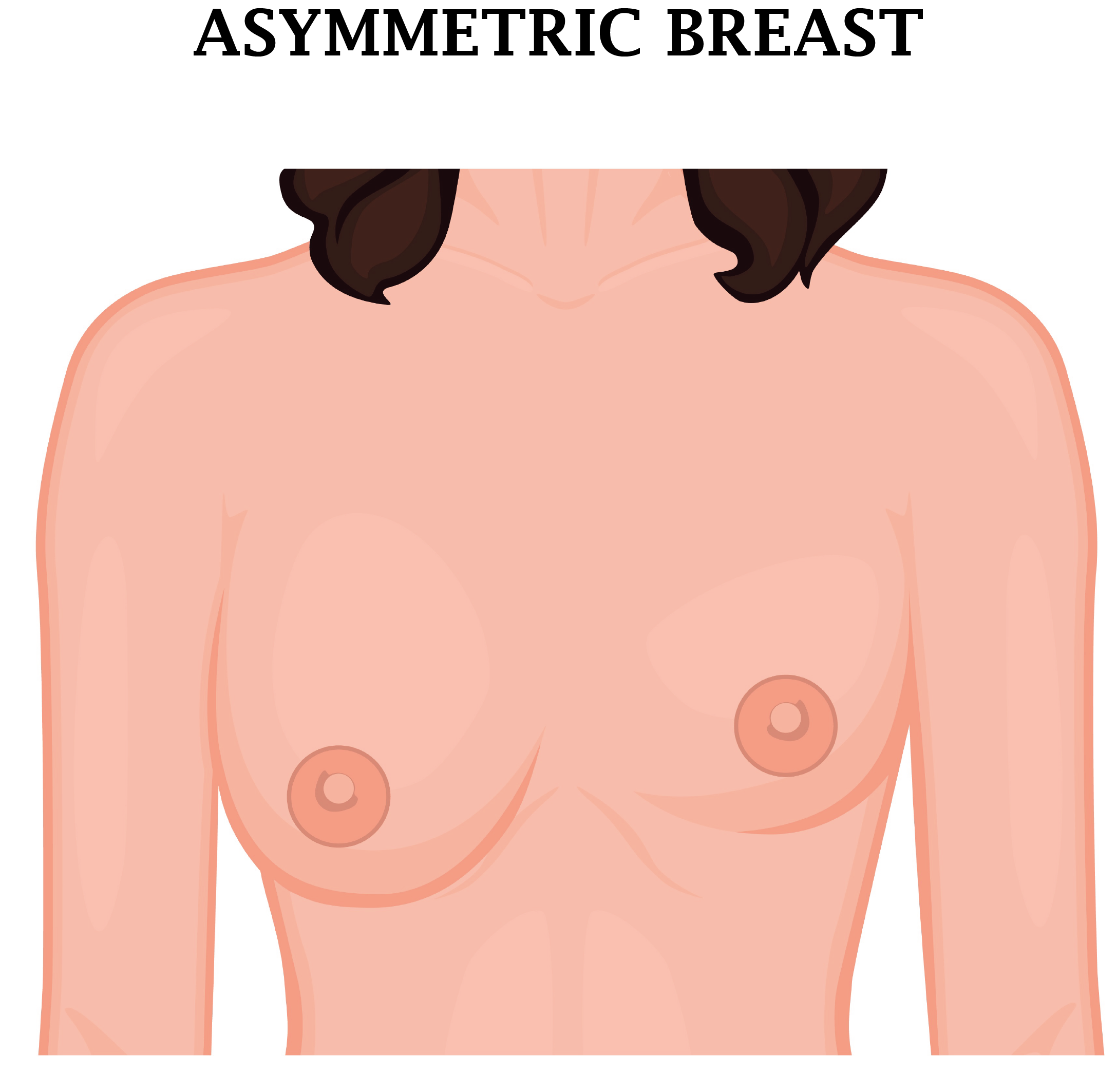
Knowing Breast Asymmetry
Breast asymmetry refers to unequal breasts in women, where one breast of the woman has a different size, volume, form or shape than the other. Most women’s breasts are slightly different in size, shape, and position. Also, uneven breasts or nipples may happen due to sudden physiological changes in the woman’s body.
Causes of Breast Asymmetry

Breast asymmetry is very common and affects more than half of all women. They can change in size or volume due to trauma, puberty or hormonal changes.
One cause is that the woman’s breast tissue can change when she is ovulating, and can often feel fuller and more sensitive. It is common for the breasts to look bigger because they actually grow from water retention and blood flow. However, during menstrual cycle, they will return to their normal size.
Another cause for asymmetrical breasts is a condition called juvenile hypertrophy of the breast. Even though it is rare, this can cause one breast to grow significantly larger than the other. Also, it can be corrected with surgery depending on the woman’s body needs.
Some changes may also happen during puberty. During puberty, the left and right breast often develop at a slightly different pace. Breasts may appear asymmetrical until they have finished growing, or they may remain in different shapes and sizes with each other throughout the woman’s life.
Below are the hormonal changes that can cause one or both breasts to change:
- During menstrual period
- During or near menopause
- During pregnancy or breastfeeding
- When using a hormonal contraceptive, such as birth control pills
Also, breasts that change in size or shape because of hormones often return to their normal size after a period of time. Some hormonal changes can also cause breasts to feel lumpy or lose fat and tissue.
There are also some underlying conditions that can affect the breast size and shape:
- Tubular breasts – also known as breast hypoplasia, tubular breasts can develop in one or both breasts during puberty.
- Amastia or amazia – a condition that causes problems in the development of breast tissue, the areola, or nipple.
- Poland Syndrome – it occurs when a chest muscle does not develop properly which can affect the breast on one side of the body.
Is Having Asymmetrical Breasts Normal?
In most cases, breast asymmetry is typically normal. In fact, the two sides of the whole body might be slightly different in size, but any asymmetry found in the body is more noticeable in the breasts.
However, if a woman notices a change in the size or shape of one breast, she should consult a doctor to find out the cause of this condition. A significant difference in size and shape between the breasts is less common, and there may be other underlying medical condition for this symptom, so it is advisable to see a doctor first to get advice for this.
Is Having Asymmetrical Breasts a Sign of Cancer?
Undergoing an annual or biennial mammogram is important for a woman’s breast health because these devices can detect early signs of cancer or abnormalities. A very common abnormality seen on mammogram results is usually caused by the breast asymmetry.
If the woman sees a large variation in asymmetry or her breast density suddenly changes, this may indicate signs of cancer. The unusual changes you have to look out for that may lead to breast cancer are the following:
- A lump in or around the breast
- A lump under the arm
- Tissue that feels thick or firm near the breast or under the arm
- A change in the size or shape of a breast
- Changes to the nipple as it starts to point inward
- Fluid or discharge from the nipple
- Red, itchy, or scaly skin around the breast
- Dimpled or puckered skin
Tests Needed for Breast Asymmetry
Whoever experiences asymmetry in their breasts should visit the doctor for further tests. These tests will likely include mammogram to check both breasts thoroughly. Ultrasound testing is also an additional test to check if there are any signs of breast cancer.
In some cases, the doctor usually recommends to follow up these tests with a biopsy. Tissue from the breast will be sent to a laboratory to check if it contains cancer cells. The tissue sample is usually removed using a fine and clean needle.
Breast asymmetry is a common change that can suddenly occur in a woman’s body. You do not have to be too concerned about it. However, if the size of your breasts changes or the density variation becomes larger, these changes should be paid attention for.
If this happens, you should see a doctor for an examination. Also, for those women who reach the age of 40, it is essential for them to do regular breast self-exams and mammograms.
